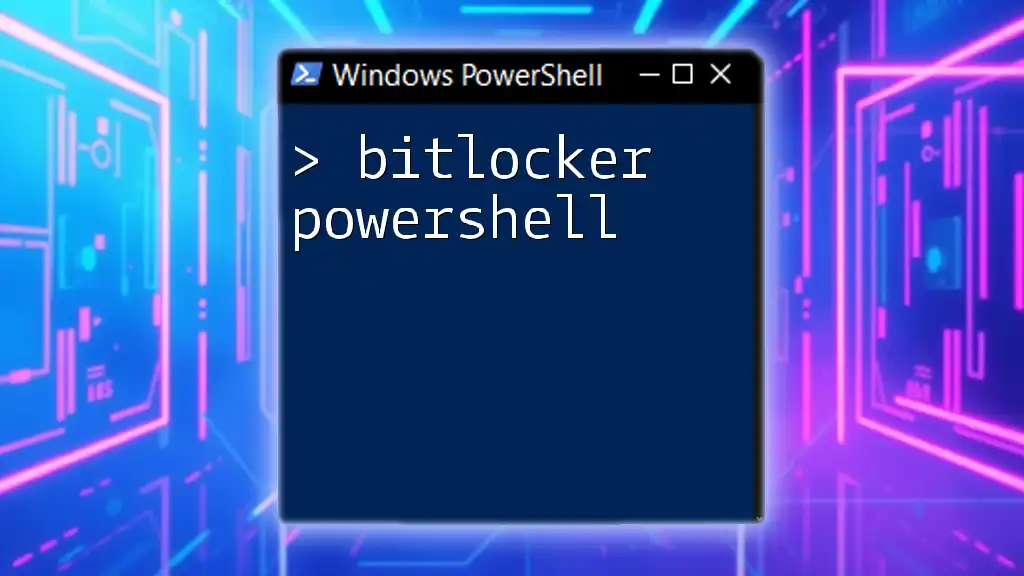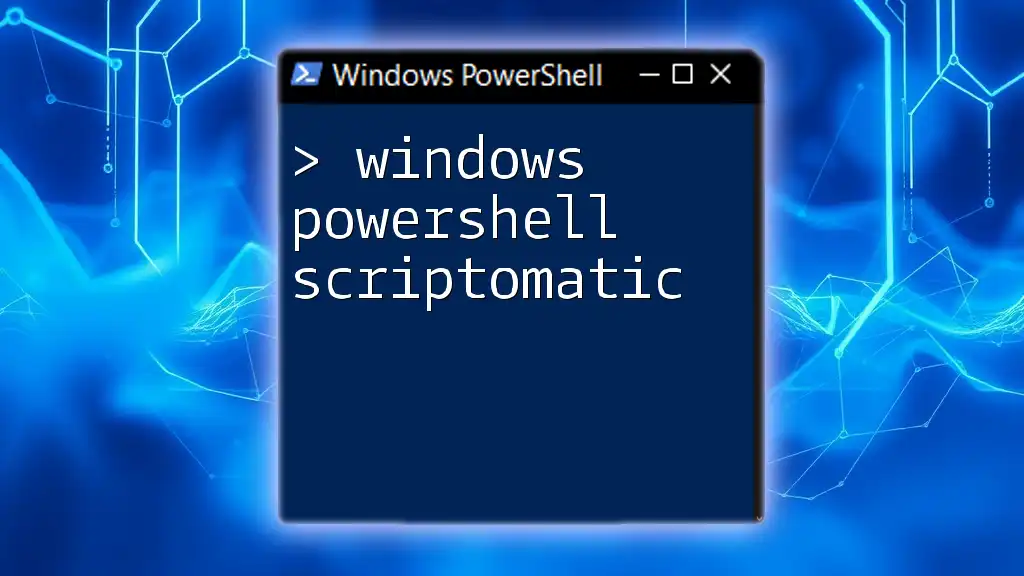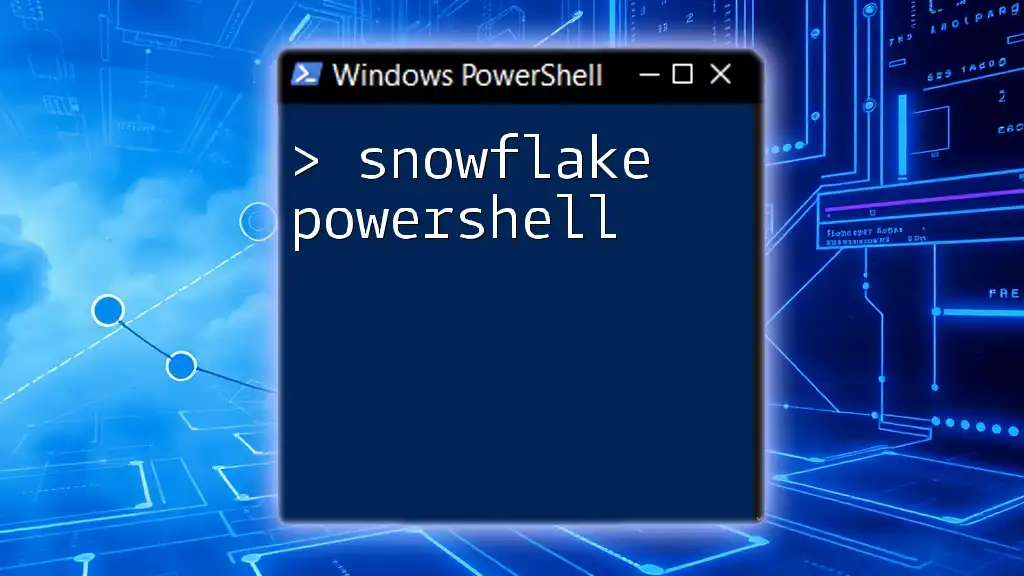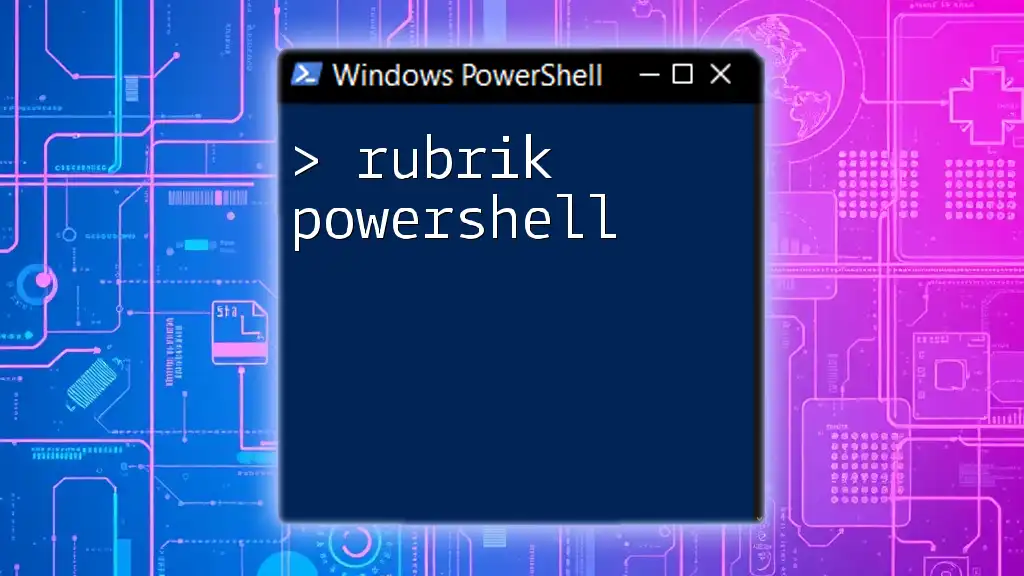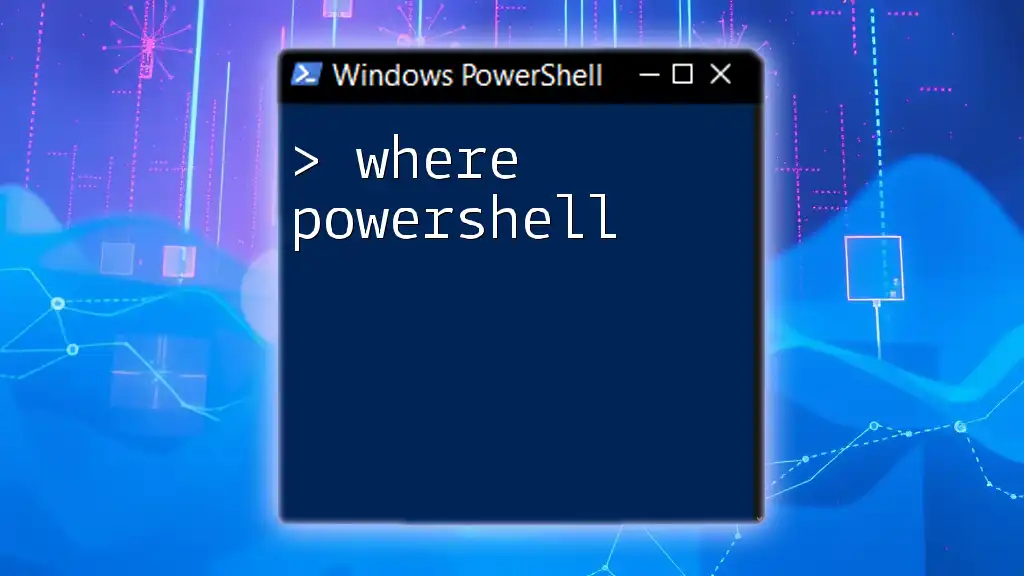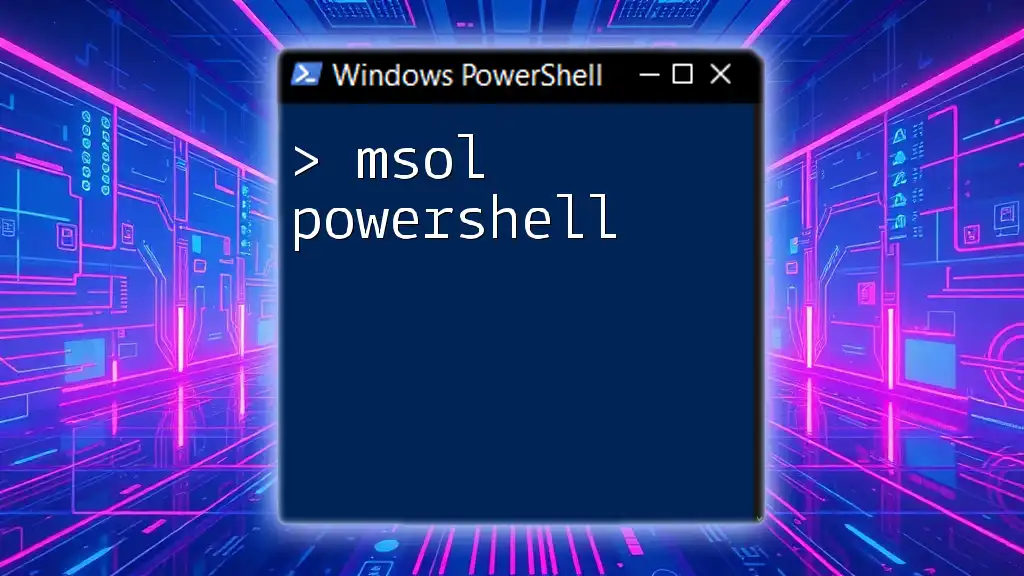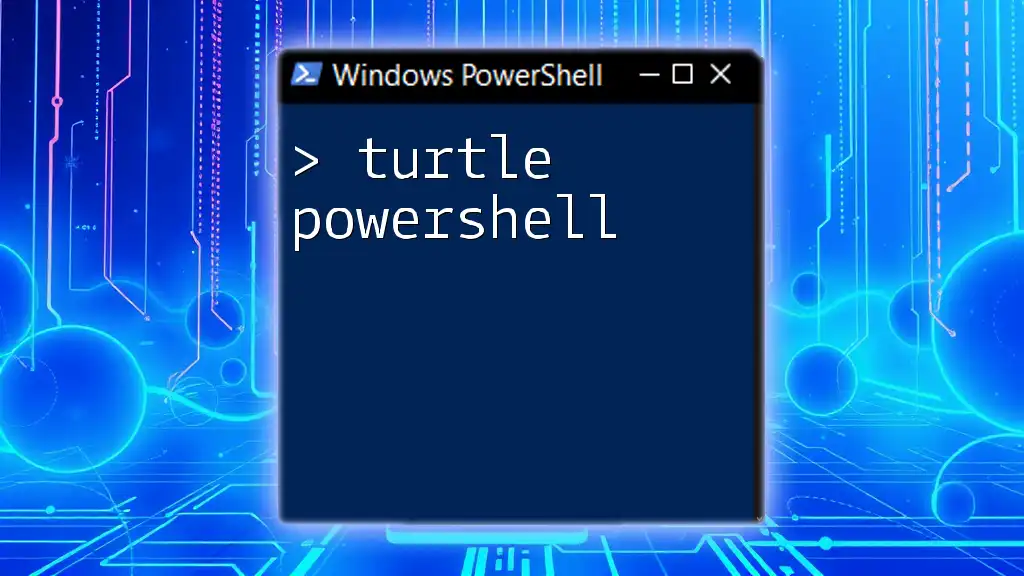The `Invoke-PowerShell` command allows users to run PowerShell scripts or commands in a new PowerShell session, enabling efficient execution without leaving the current session context.
Here’s a code snippet to demonstrate its use:
Invoke-Command -ScriptBlock { Write-Host 'Hello, World!' }
What is Invoke-PowerShell?
The `Invoke-PowerShell` command is a powerful and versatile command in PowerShell that allows users to execute scripts and commands in various contexts, including locally or on remote systems. It is an essential tool for system administrators and IT professionals who manage multiple environments.
Differences Between Invoke-PowerShell and Other Commands
While there are other command types in PowerShell like `Execute-Command` or `Invoke-Expression`, `Invoke-PowerShell` provides a more structured environment for executing commands, particularly when it involves handling script blocks. This clarity helps when managing complex tasks and automating system management processes.

Basic Syntax of Invoke-PowerShell
The syntax for `Invoke-PowerShell` is straightforward:
Invoke-PowerShell -ScriptBlock { YourCodeHere }
Parameters
Understanding the parameters that `Invoke-PowerShell` accepts is crucial for maximizing its potential:
-
`-ScriptBlock`: This parameter allows you to specify the block of code that you want to execute. It's a container for your PowerShell commands.
-
`-ArgumentList`: This parameter lets you send arguments to the script block being executed, making the command more dynamic.
-
`-Credential`: When working with remote systems, this parameter allows you to provide credentials for authentication, enhancing security.

Practical Use-Cases for Invoke-PowerShell
Script Execution and Automation
`Invoke-PowerShell` shines in its ability to automate tasks across systems. For instance, running scripts remotely can save significant time and effort:
$session = New-PSSession -ComputerName "RemotePC"
Invoke-PowerShell -ScriptBlock { Get-Process } -Session $session
In this example, `Invoke-PowerShell` retrieves the list of processes running on a remote computer called "RemotePC." Automating such tasks helps system administrators manage large networks effectively.
Executing Commands on Remote Machines
With `Invoke-PowerShell`, executing commands on machines anywhere on the network becomes process-efficient:
Invoke-PowerShell -ScriptBlock { Start-Service -Name "Spooler" } -ComputerName "RemotePC"
In this command, `Invoke-PowerShell` starts the Print Spooler service on "RemotePC." This capability is invaluable for managing services that may vary across multiple systems.
Interactive Testing and Debugging
Another valuable use of `Invoke-PowerShell` is in testing commands before executing them in production environments. For example, debugging a simple command can be done as follows:
Invoke-PowerShell -ScriptBlock { Write-Host "Testing..." }
This allows users to validate their scripts without impacting live systems, fostering a safer environment for experimentation.

Advanced Usage of Invoke-PowerShell
Passing Parameters
Passing parameters enhances the flexibility of your `Invoke-PowerShell` commands. Here’s a way to implement it:
$param = "ParameterValue"
Invoke-PowerShell -ScriptBlock { param($input) Write-Host $input } -ArgumentList $param
In this case, the string "ParameterValue" is passed to the script block, demonstrating how parameters can be handled effectively within `Invoke-PowerShell`.
Using with Scheduled Tasks
`Invoke-PowerShell` can be combined with Windows Task Scheduler to automate tasks succinctly. By scheduling `Invoke-PowerShell` commands based on specific triggers, you can create an automated system maintenance routine.
Handling Errors
Error management is an essential aspect of reliable script execution. For example:
Invoke-PowerShell -ScriptBlock { Get-UnknownCommand } -ErrorAction Stop
Using the `-ErrorAction` parameter allows you to stop the execution and handle errors without running into silent failures, which can cause significant issues if left unnoticed.
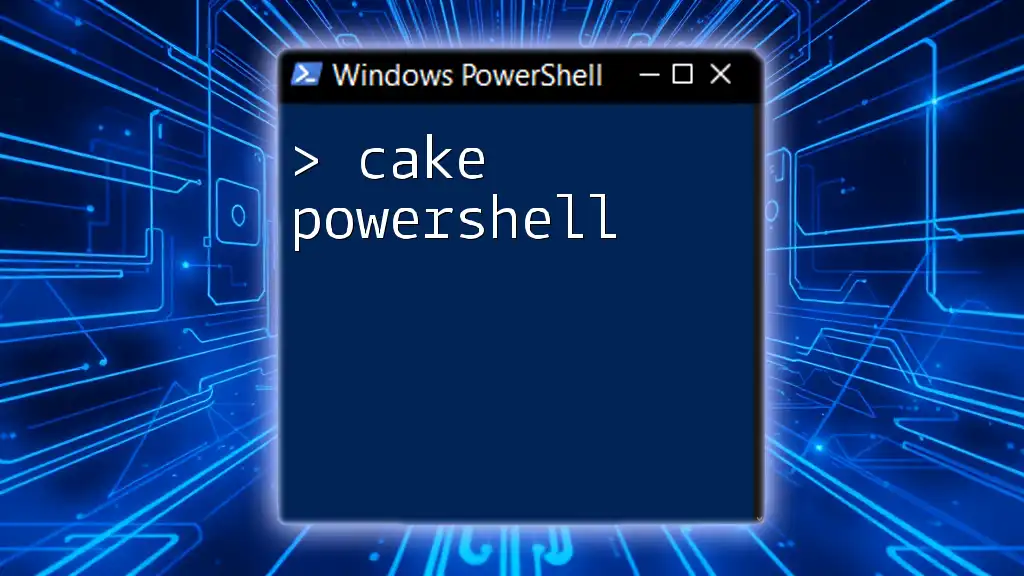
Best Practices for Using Invoke-PowerShell
Optimize Performance
To ensure that `Invoke-PowerShell` performs optimally, consider structuring your script blocks to minimize overhead. Keep script blocks concise and focused on specific tasks to enhance execution speed.
Security Considerations
When using `Invoke-PowerShell`, security should always be a priority. Utilize the `-Credential` parameter to authenticate yourself when executing commands on remote machines. Moreover, avoid running commands as an administrator unless absolutely necessary to reduce potential security risks.
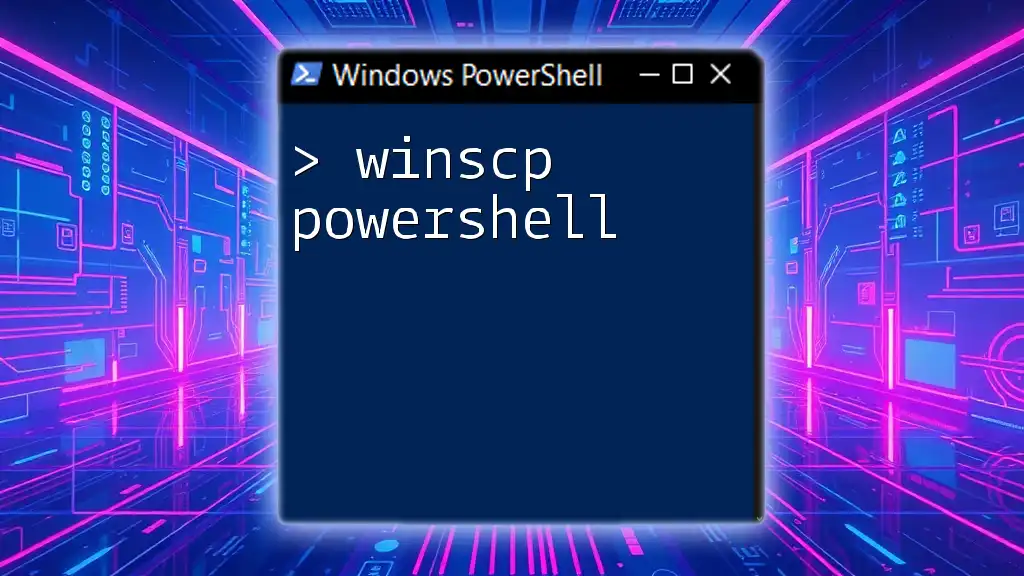
Troubleshooting Common Issues
Common Errors Encountered
Users often run into issues such as permission errors or unresponsive commands when using `Invoke-PowerShell`. Misconfigurations in the command syntax or network issues can also lead to failures.
Tips for Resolving Issues
When faced with issues, first check for typos in your command or ensure the target system is reachable. Utilizing the debugging features of PowerShell or logging errors can also provide insights into what went wrong, paving the way for swift resolutions.
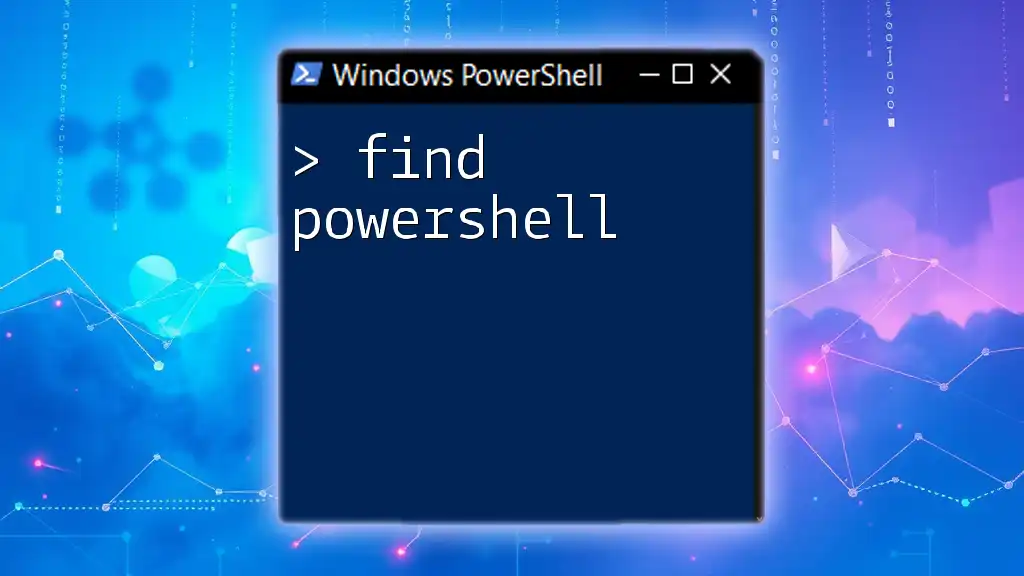
Conclusion
`Invoke-PowerShell` is not only a powerful command for executing PowerShell scripts and commands but a vital component for streamlining administrative tasks across multiple systems. By understanding its syntax, parameters, and real-world applications, users can significantly improve their workflow effectiveness.
Harnessing the potential of `Invoke-PowerShell` can elevate your scripting capabilities and administrative efficiency. By practicing the techniques outlined in this guide, you will find yourself better equipped to manage the complexities of system administration.









